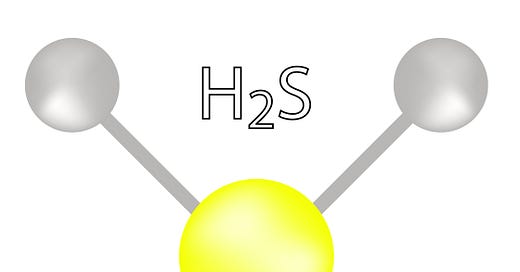Washington D.C. October 11, 2024.
The U.S. Chemical Safety and Hazard Investigation Board (CSB) announced today that it is launching an investigation into a fatal release of hydrogen sulfide at the Pemex petroleum refinery in Deer Park, Texas, which occurred yesterday, October 10. Two contract workers died as a result of the release, and an additional 13 workers reportedly were transported to local medical facilities.
Most readers of this blog will be familiar with the hazards of hydrogen sulfide (H2S). Nevertheless, in spite of its familiarity, it useful to review the properties of this dangerous gas. We have publishing a short series of posts on this topic.
This is the final post in the series. The first four are:
Additional information is provided in the book Plant Design and Operations.
Like all emergency responses, a release of H2S should follow these steps.
Identify the source of the leak.
Establish evacuation routes and muster points. Close all doors, windows and vents.
Use emergency blowers to disperse the gas (unless they are an ignition source).
Activate the Emergency Response Team.
After the event is under control, follow all-clear procedures.
H2S Emergencies
If there is an emergency involving an H2S leak the following guidance should be considered.
Low level alarm (10 ppm): evacuate all non-essential personnel form the operational area and have them move upwind.
High level alarm (20 ppm): all personnel must don their Self-Contained Breathing Apparatus (SCBA). Essential personnel must report to their duty station.
High-high level alarm (50 ppm): evacuate of all non-essential personnel.
In all alarm situations:
No one should enter a hazardous area in order to rescue someone unless they are wearing the proper SCBA.
The buddy system should always be used.
Only the person-in-charge can decide if a release is to be ignited.
First Aid Treatment
If someone is overcome with H2S fumes the following first aid measures should be followed.
Activate the emergency program and call for help.
Don an SCBA before entering a potential H2S area, then remove the victim to a safe area and begin artificial resuscitation.
Initiate CPR if circulation has stopped.
Treat for shock (keep the victim warm).
Have the person examined by a qualified physician as soon as possible.
Emergency Contacts
A list of emergency contacts should be available, including the following.
Emergency Services
Ambulances
Hospitals
Medical personnel
Helicopter services
Local Emergency Planning Committee
National Response Center
State Emergency Response Commission
State and Local Law Enforcement Agencies
Civil Defense
Fire Departments
Contractors
Contractor personnel
Service companies
Government Agencies and Contacts





